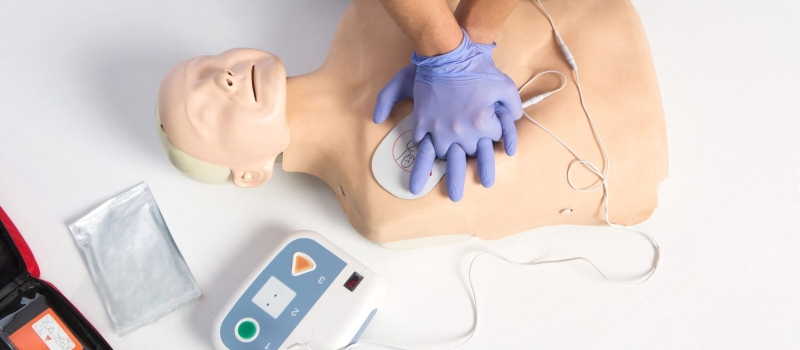The Vital Importance of CPR and AED General Awareness
Tuesday, August 29, 2023 John Coniglio

Emergencies often strike without warning, making it essential for individuals to possess the knowledge and skills to respond effectively. Among the most crucial life-saving skills are Cardiopulmonary Resuscitation (CPR) and the use of Automated External Defibrillators (AEDs). General awareness about these techniques is not just valuable – it's a matter of life and death.
CPR: A Bridge to Survival
Cardiac arrest, which occurs when the heart suddenly stops beating, is a leading cause of death worldwide. CPR is a technique that involves chest compressions and rescue breaths, maintaining blood circulation and oxygen flow until professional medical help arrives. The importance of CPR awareness cannot be overstated:
1. Immediate Response: Prompt initiation of CPR significantly increases the chances of survival for someone experiencing cardiac arrest. Every minute without CPR decreases the chances of recovery by 7-10%. According to the American Heart Association, bystander CPR can double or even triple the chances of survival.
2. Bystander Empowerment: CPR doesn't require medical expertise; anyone can learn and perform it. Empowering bystanders with CPR knowledge turns them into potential lifesavers.
3. Bridge to Defibrillation: CPR sustains minimal blood flow, which is crucial until an AED can be used. Effective CPR buys time for the arrival of an AED and medical professionals.
4. Community Resilience: A community well-versed in CPR becomes a network of first responders, capable of providing aid until professional help takes over.
AEDs: Shocking Solutions
Automated External Defibrillators (AEDs) are portable devices that deliver an electric shock to restore the heart's normal rhythm during cardiac arrest. AED awareness complements CPR skills:
1. Simplicity Saves Lives: AEDs are designed to be user-friendly, with clear visual and auditory instructions. They guide users through the process step by step.
2. Time is of the Essence: For every minute that passes without defibrillation, the survival rate drops by about 10%. AEDs ensure swift intervention.
3. Widespread Availability: AEDs are increasingly found in public spaces such as airports, malls, and schools. Knowing their locations and how to use them can turn ordinary citizens into heroes.
4. Comprehensive Response: Combining CPR and AED use creates a comprehensive response strategy for cardiac emergencies, dramatically increasing the likelihood of survival.
Raising Awareness: A Call to Action
Creating a society where CPR and AED awareness is the norm requires concerted efforts:
1. Education: Schools, workplaces, and community centers should offer CPR and AED training, making it accessible to all.
2. Public Campaigns: Government and non-profit organizations can initiate awareness campaigns to highlight the simplicity and importance of these life-saving techniques.
3. Regular Training: Skills can fade over time. Encouraging periodic refresher courses ensures that knowledge stays current.
4. Incorporate in Policy: Incorporating CPR and AED training into workplace and school policies can embed preparedness in everyday life.
In the grand scheme of life, emergencies are an unfortunate reality. However, by fostering CPR and AED awareness, we can become active participants in altering the outcomes of those emergencies. Each person equipped with these skills becomes a beacon of hope, turning adversity into a chance for survival and renewal.




.jpg)